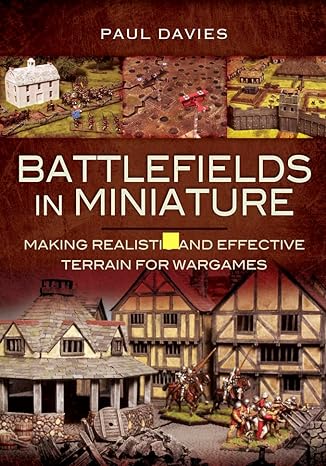Painting By Numbers - Greek Hoplites Part 2
| 2.1 | Painting the greaves is a messy business - very rough and ready, just slapping a bronze paint around the lower legs. I found that they weren't that crisply cast on most of the figures, and as they will be hidden below the tunics, and partly swallowed up by the basing later on, I wasn't too fussed about accuracy. | All images on this page are thumbnails - click on any of them to get the "bigger picture" ! |
|
| 2.2 | By this time you have an awful lot of hoplites, who all look like they are close - but no cigar - to being finished. Next stage is to paint the backs of the shields of those undercoated in white. Those done in Sand you can actually live with leaving if you are really lazy - my previous batch were left, but as I was doing some shield-backs here, and only had a few sand-coated guys, it was relatively easy to finish them off as well |  |
|
| 2.3 | For my next truck, it was first painting the edges of the bases, and then adding the base texture, plain natural Wood Polycell woodfiller, plus dry-brushing. This is shown on my other painting guide, so I wont bore you with it again !! | to the other guide ! | |
| 2.4 | After that we are into the world of shield patterns. There seem to be a large number of painting guides, and also pictures of hoplites come up relatively often in magazines like Miniature Wargames and Wargames Illustrated, so there should be plenty to go on. Unfortunately most of them are very very complicated, and impossible for someone as poor/lazy as me to achieve ! I used ideas from articles in MW (article on shield designs May 1997 by Tom Cockerel / Spartans in Asia Sept 1994, Paul Keaney / Nov 1996 Sparta vs Carthage, Gareth Harding figures) |  |
|
| 2.5 | The aim instead of absolute historical accuracy was to achieve 3 things: Colour, Variety and Simplicity. The starting point was to do a wide range of shield base colours |  |
|
| 2.6 | Then, because plain shields look pants, adding metallic -
or checkered - rims to them all. Not fun :-(
Previous hoplites of mine had all had metallic shield rims, however after seeing a rather amusing video featuring re-enactors and Brian Blessed, I had noticed that a checkered edge to shields was also fairly realistic. This meant doing some rims in white initially. |
 |
|
| 2.7 | And then hey are nearly done - the next few pictures are some of the easy patterns I tried. From left to right we have: A wreath - made from a series of overlapping white blobs, far more effective from a distance than it looks here, An anchor - easy, An Octopus - not sure if it is historical, but two big blobs on top of each other, then 8 short wavy lines radiating from the bottom blob, A Theban Club - very easy, a row of blobs + a short line, A Crab - an oval blob, with 6 straight lines for legs, and to fairly rudimentary claws | ||
| 2.8 | Next; An Amphora - a T-Shape, then a small blob and an oval blob, but with two "arms". Leaving the gaps between the elements of the composition seems the secret here, A Macedonian Star - maybe a bit early for it, but who cares, it's easy, and it has a checkered edge too, A Bird - easier than I thought, starting with the body, then adding a curve for the leading edge of the wings, and then a series of overlapping trailing feathers, Another Star and Another Amphora | ||
| 2.9 | This one is a Lion - simple close up, effective from a distance, a, a Snake - or maybe we just call it a white line, | 
| |
















